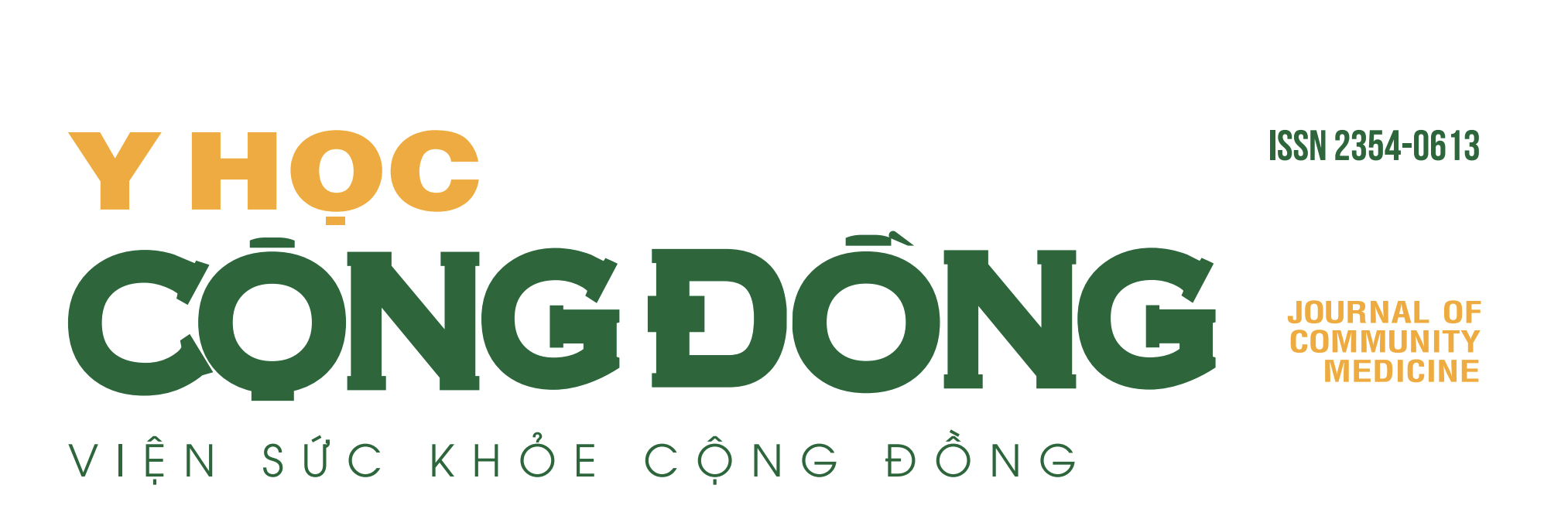15. LOẠN SẢN SỢI THỂ MỘT XƯƠNG, THỂ NHIỀU XƯƠNG VÀ HỘI CHỨNG MCCUNE-ALBRIGHT: CA LÂM SÀNG VÀ XEM XÉT Y VĂN
Nội dung chính của bài viết
Tóm tắt
Mục tiêu: Bài viết trình bày đặc điểm lâm sàng, hình ảnh học, phương pháp điều trị và kết quả của 5 trường hợp loạn sản sợi, đồng thời tổng quan y văn nhằm nhấn mạnh tầm quan trọng của việc chẩn đoán và điều trị phù hợp.
Phương pháp: Mô tả loạt ca bệnh gồm 5 bệnh nhân được chẩn đoán loạn sản sợi tại Bệnh viện Chấn thương Chỉnh hình thành phố Hồ Chí Minh. Dữ liệu bao gồm lâm sàng, hình ảnh học, điều trị và theo dõi hậu phẫu. Đồng thời, tổng quan y văn được thực hiện từ các nguồn cập nhật.
Kết quả: Trong 5 trường hợp, có 3 bệnh nhân loạn sản sợi thể một xương, 1 bệnh nhân loạn sản sợi thể nhiều xương và 1 bệnh nhân hội chứng McCune-Albright. Trong đó, 4 bệnh nhân được phẫu thuật do gãy xương bệnh lý, 1 bệnh nhân do tổn thương gây biến dạng xương và đau kéo dài. Các phương pháp điều trị phẫu thuật bao gồm nẹp vít khóa, đinh nội tủy. Kết quả điều trị nhìn chung khả quan, không có biến chứng lớn.
Kết luận: Loạn sản sợi có biểu hiện đa dạng, cần được cá thể hóa trong điều trị. Phẫu thuật được chỉ định khi có triệu chứng và theo dõi lâu dài đóng vai trò quan trọng.
Chi tiết bài viết
Từ khóa
Loạn sản sợi, gãy bệnh lý, điều trị phẫu thuật, hội chứng McCune-Albright.
Tài liệu tham khảo
[2] DiCaprio M.R, Enneking W.F. Fibrous dysplasia. Pathophysiology, evaluation, and treatment. J Bone Joint Surg Am, 2005, 87 (8): 1848-64.
[3] Board WCoTE. McCune-Albright syndrome. In: Board WCoTE, editor. WHO Classification of Tumours: Soft Tissue and Bone Tumours. 5th ed. Lyon: International Agency for Research on Cancer, 2020, p. 514-6.
[4] Javaid M.K, Boyce A, Appelman-Dijkstra N, Ong J, Defabianis P, Offiah A et al. Best practice management guidelines for fibrous dysplasia/McCune-Albright syndrome: a consensus statement from the FD/MAS international consortium. Orphanet journal of rare diseases, 2019, 14: 1-17.
[5] Baghdadi S, Arkader A. Fibrous dysplasia: recent developments and modern management alternatives. Journal of the Pediatric Orthopaedic Society of North America, 2020, 2 (2): 84.
[6] Arkell C, van Heerden J. Fibrous dysplasia: a current concepts review. SA Orthopaedic Journal, 2023, 22 (4): 208-17.
[7] Boyce A.M, Kelly M.H, Brillante B.A, Kushner H, Wientroub S, Riminucci M et al. A randomized, double blind, placebo-controlled trial of alendronate treatment for fibrous dysplasia of bone. The Journal of Clinical Endocrinology & Metabolism, 2014, 99 (11): 4133-40.
[8] Chapurlat R.D, Gensburger D, Jimenez-Andrade J.M, Ghilardi J.R, Kelly M, Mantyh P. Pathophysiology and medical treatment of pain in fibrous dysplasia of bone. Orphanet journal of rare diseases, 2012, 7 (Suppl 1): S3.
[9] Leet A.I, Boyce A.M, Ibrahim K.A, Wientroub S, Kushner H, Collins M.T. Bone-grafting in polyostotic fibrous dysplasia. JBJS, 2016, 98 (3): 211-9.
[10] Ebeid W.A, Hasan B.Z, Mesregah M.K. Management of Fibrous Dysplasia of Proximal Femur by Internal Fixation Without Grafting: A Retrospective Study of 19 Patients. J Am Acad Orthop Surg Glob Res Rev, 2018, 2 (10): e057.
[11] Majoor B.C, Leithner A, van de Sande M.A, Appelman-Dijkstra N.M, Hamdy N.A, Dijkstra P.S. Individualized approach to the surgical management of fibrous dysplasia of the proximal femur. Orphanet journal of rare diseases, 2018, 13: 1-13.

